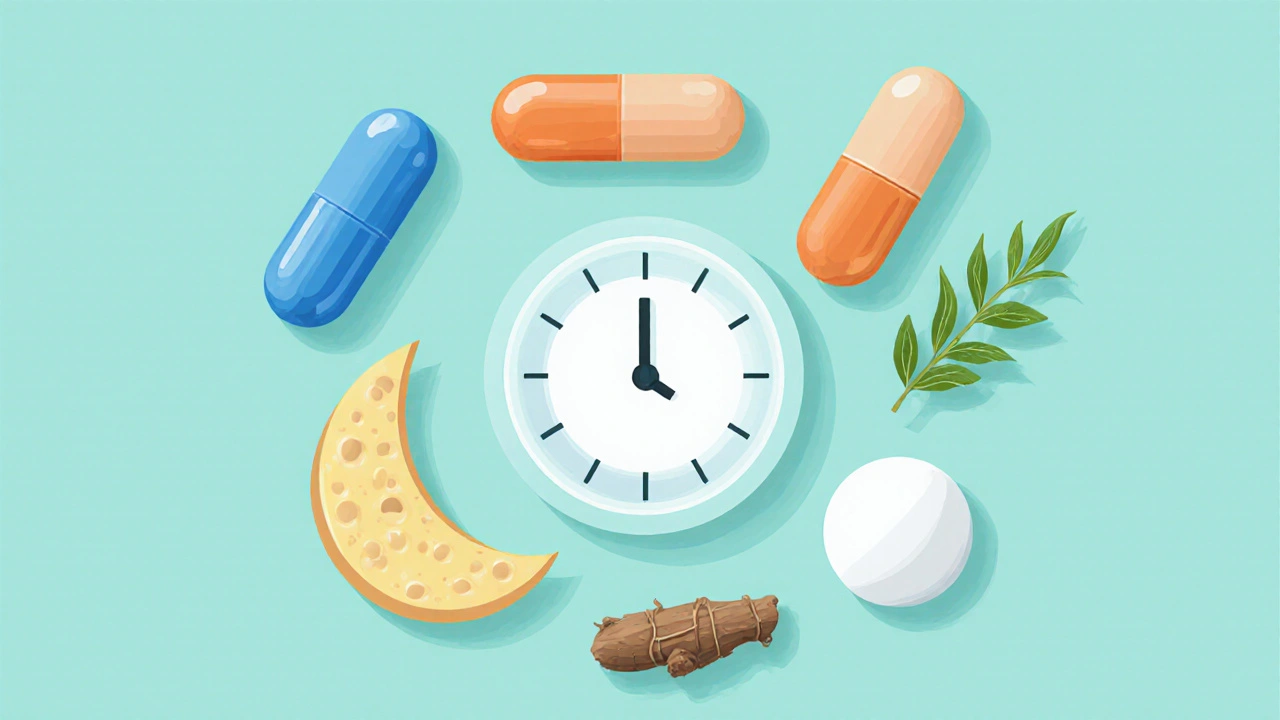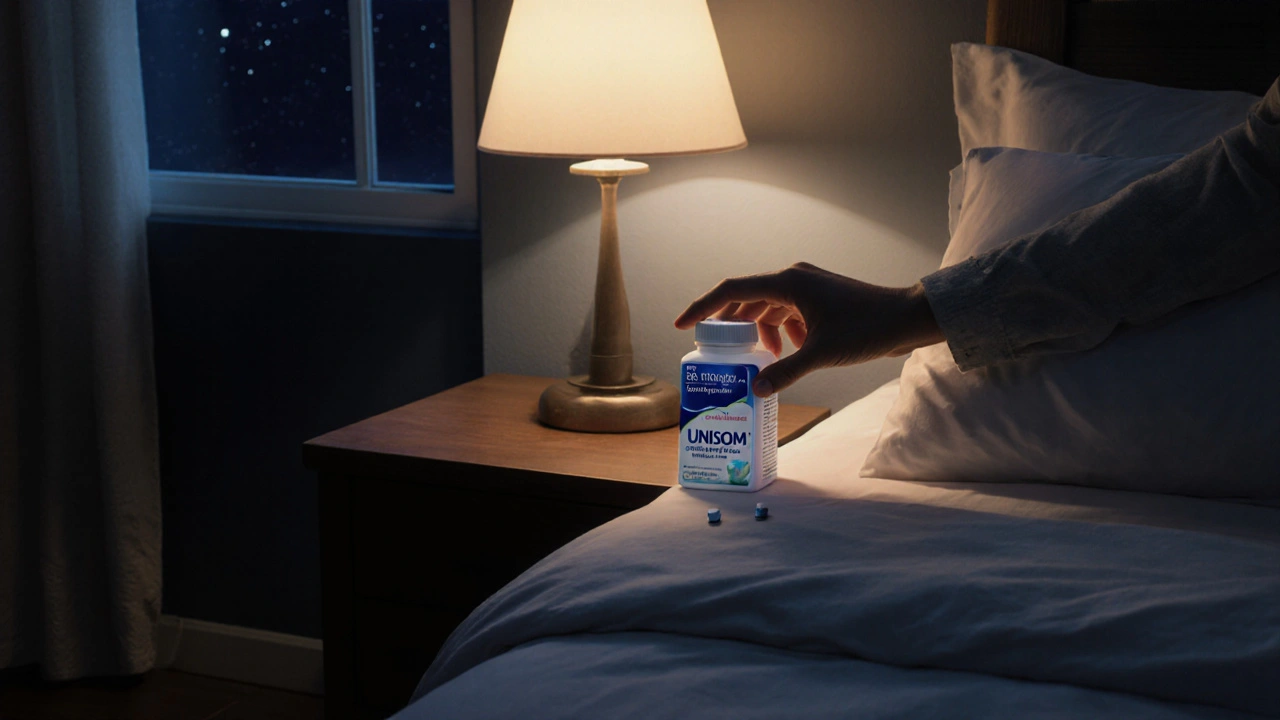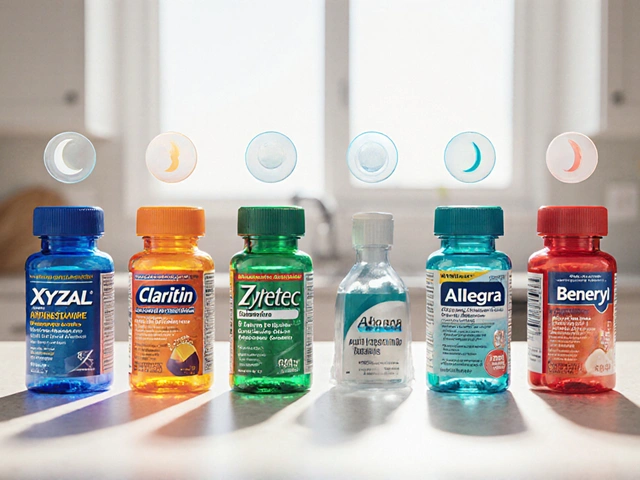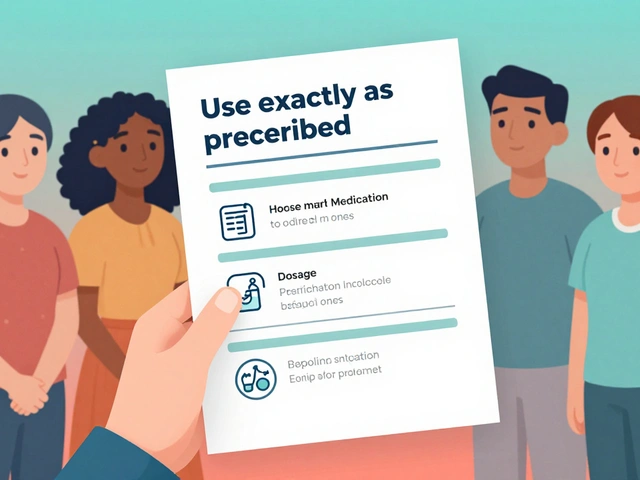Unisom vs Other Sleep Aids: Comparison Tool
Recommended Sleep Aid:
How Each Ingredient Works:
Diphenhydramine
First-generation antihistamine. Causes drowsiness by blocking histamine receptors.
Doxylamine
Similar to diphenhydramine but longer-lasting. Often causes less morning grogginess.
Melatonin
Hormone that regulates sleep-wake cycle. Best for jet lag and shift work.
Valerian Root
Herbal extract that increases GABA activity. Gentle, natural sedative.
When a restless night hits, the first thing most people reach for is an over‑the‑counter sleep aid. Unisom is the brand name most associated with diphenhydramine, the same antihistamine that also shows up as Benadryl. But it isn’t the only option on the shelf. This guide breaks down Unisom, looks at the most common alternatives, and tells you which one fits different sleep problems best.
TL;DR - Quick Takeaways
- Unisom (diphenhydramine) works well for occasional insomnia but can cause next‑day grogginess.
- Doxylamine (Unisom SleepStep) often feels less sedating the next morning.
- Melatonin is best for jet‑lag or shift‑work adjustments, not for deep sleep.
- Valerian root offers a gentle, herb‑based option but results vary widely.
- Prescription meds like zolpidem are strongest but require a doctor’s approval.
Understanding the Core Ingredients
Before diving into the side‑by‑side comparison, it helps to know what each ingredient actually does.
Diphenhydramine is an first‑generation antihistamine that crosses the blood‑brain barrier, causing drowsiness as a side effect. It blocks histamine receptors in the brain, which is why you feel sleepy.
Doxylamine is another first‑generation antihistamine, chemically similar to diphenhydramine but with a slightly longer half‑life, making it a popular choice for night‑time dosing.
Melatonin is a hormone naturally released by the pineal gland that signals the body it’s time to sleep. Supplemental melatonin helps reset the internal clock.
Valerian root is a botanical extract thought to increase GABA activity, promoting a calm, sleepy state without the strong antihistamine effect.
Zolpidem is a prescription sedative‑hypnotic that binds directly to GABA‑A receptors, inducing sleep much faster and with less morning hang‑over-if used correctly.
Side‑by‑Side Comparison Table
| Product | Active Ingredient | Typical Dose | Onset (min) | Duration (hrs) | Common Side Effects | Best For |
|---|---|---|---|---|---|---|
| Unisom (SleepTabs) | Diphenhydramine | 25‑50mg | 30‑60 | 6‑8 | Dry mouth, next‑day drowsiness | Occasional insomnia, short trips |
| Unisom SleepStep | Doxylamine | 25mg | 30‑45 | 7‑9 | Dry mouth, mild headache | People who want fewer morning groggies |
| Melatonin (OTC) | Melatonin | 0.5‑5mg | 15‑30 | 4‑6 | Vivid dreams, slight dizziness | Jet‑lag, shift‑work adjustment |
| Valerian Root Capsules | Valerian extract | 300‑600mg | 45‑60 | 5‑7 | Headache, mild stomach upset | Gentle, natural‑feel sleep aid |
| Zolpidem (Ambien) | Zolpidem | 5‑10mg (prescribed) | 5‑15 | 6‑8 | Sleepwalking, memory issues (rare) | Chronic insomnia, when OTC fails |
When to Choose Unisom (Diphenhydramine)
If you only need a sleep aid once in a while-maybe after a long flight or a stressful exam-Unisom is a solid, widely available choice. Its 25mg dose is low enough for most adults without a prescription, and the side‑effect profile is well understood. However, because diphenhydramine also works as an antihistamine, you may notice a dry throat or a “foggy” feeling the next morning, especially if you take the higher 50mg dose.
Unisom is also cheap: a typical 100‑tablet bottle costs under £5 in the UK, making it a go‑to for budget‑conscious shoppers.

Alternatives Worth Considering
Below are scenarios where another product might beat Unisom.
Doxylamine (Unisom SleepStep)
People who hate the grogginess of diphenhydramine often switch to doxylamine. It has a slightly longer half‑life, so the sedation lasts through the night but wears off more cleanly in the morning. The 25mg tablet is also chewable, which is handy for kids over 12 (though consult a pharmacist first).
Melatonin
Melatonin shines when the problem is timing, not severity. If you’re crossing time zones or doing rotating night shifts, a low‑dose supplement taken 30minutes before bed can help reset the circadian rhythm without the antihistamine hang‑over. It’s safe for most adults, but people on blood‑thinners should check with a doctor.
Valerian Root
For those who prefer a plant‑based solution, valerian offers a mild sedative effect. The research is mixed-some users swear by a calm, natural sleep, while others feel no difference. If you’re sensitive to chemicals or have a history of antihistamine side effects, valerian is a low‑risk trial.
Prescription Options (Zolpidem)
When insomnia becomes chronic-defined as trouble falling or staying asleep at least three nights a week for three months-OTC options may not cut it. Zolpidem (commonly known by the brand name Ambien) is a prescription drug that works directly on GABA receptors, producing fast, deep sleep. It requires a doctor's assessment because of potential dependence and rare complex‑sleep behaviors.
How to Pick the Right Sleep Aid for You
- Identify the root cause. Is it a one‑off event, a shift‑work pattern, or chronic difficulty?
- Consider side‑effect tolerance. Antihistamines cause dry mouth and next‑day fog; melatonin rarely does.
- Check drug interactions. Diphenhydramine can amplify sedative effects of alcohol, benzodiazepines, or certain antidepressants.
- Assess cost and accessibility. OTC options are cheap and immediate; prescription meds need a doctor visit.
- Trial period. Use the product for a maximum of two weeks to see if it improves sleep without unwanted effects.
Safety Tips When Using OTC Sleep Aids
- Never combine diphenhydramine or doxylamine with alcohol-both depress the central nervous system.
- Avoid driving or operating machinery for at least 4‑6hours after the dose.
- If you have glaucoma, asthma, or an enlarged prostate, talk to a pharmacist before using antihistamine‑based aids.
- Pregnant or nursing mothers should consult a healthcare professional; melatonin data is limited, and antihistamines cross the placenta.
- Store all sleep aids out of reach of children. Accidental overdose can cause seizures.
Frequently Asked Questions
Can I use Unisom every night?
Occasional use is fine, but daily reliance can lead to tolerance and worsening morning grogginess. If you need a sleep aid more than twice a week, discuss alternatives with a pharmacist.
Is diphenhydramine the same as Benadryl?
Yes. Both contain the same active ingredient, diphenhydramine. The difference is branding and dosage form-Unisom is marketed as a sleep aid, while Benadryl is marketed for allergy relief.
Will melatonin keep me from waking up at night?
Melatonin mainly helps you fall asleep faster and regulate the sleep‑wake cycle. It doesn’t usually prevent middle‑of‑night awakenings, which are often caused by other factors like stress or caffeine.
Is it safe to combine valerian with diphenhydramine?
Both act as sedatives, so stacking them can amplify drowsiness and increase the risk of falls, especially in older adults. Keep the combination short‑term and at lower doses, or choose one agent.
How long does it take for Unisom to wear off?
Typical diphenhydramine half‑life is 4‑6hours, meaning most people feel the sedative effect for about 6‑8hours. Residual grogginess can linger into the next morning, especially after higher doses.
Bottom Line
If you need a cheap, readily available sleep aid for a occasional night, Unisom alternatives such as diphenhydramine work well but come with the trade‑off of next‑day drowsiness. Doxylamine offers a smoother morning for many, melatonin targets clock‑related issues, and valerian provides a gentler, herb‑based route. For chronic insomnia, it’s worth talking to a GP about prescription options like zolpidem.
Pick the product that matches your sleep pattern, side‑effect tolerance, and budget, then give it a short trial. If you still struggle after two weeks, it’s time to seek professional advice.







Aaron Perez
October 3, 2025 AT 16:00